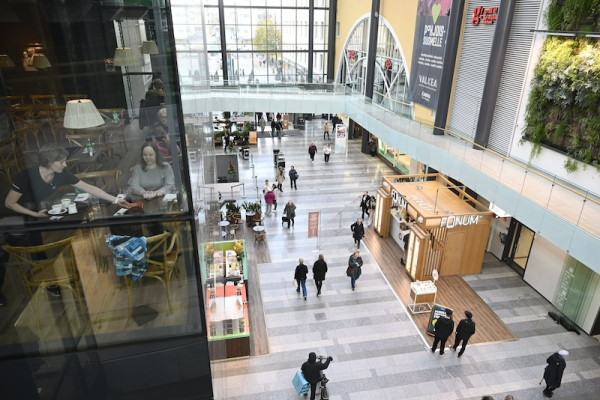Economic recovery slows as households cut back spending

People in the Valkea shopping center in Oulu. Photo: Heikki Saukkomaa / Lehtikuva
- Next Article HBL: Finland-Swedish foundations eye purchase of Old Student House in Helsinki
Finland’s economy is recovering from recession at a slower pace than expected, according to the Ministry of Finance.
The ministry now forecasts GDP growth of 1.0 percent for 2025, down from its previous estimate of 1.3 percent. Growth remains limited by low employment, global uncertainty, and weak domestic demand.
“Public finances are climbing from a deep crouch. Painfully slowly,” said Mikko Spolander, Director General at the Ministry of Finance, during a press conference in Helsinki.
Spolander said stronger fiscal prioritisation is needed in the coming years.
“It is honest to say that progress is extremely difficult unless the public service promise is aligned with public finances. That promise is a political decision.”
The ministry said the current state of public finances is such that even robust growth would not stabilise the national debt in the long term.
Public debt is expected to rise to 87 percent of GDP this year. It will briefly stabilise between 2026 and 2027, but then begin rising again. The forecast projects debt reaching 90 percent of GDP by 2029, driven by higher interest payments and defence spending.
“A rather steep jump,” said Jenni Pääkkönen, senior financial adviser at the ministry.
She said the government’s goal of stabilising the debt ratio during the current parliamentary term appears to hold briefly, but uncertainty remains high.
GDP is forecast to grow by 1.4 percent in 2026 and 1.7 percent in 2027. The 2026 figure has been revised down slightly from the summer forecast.
Unemployment remains high, limiting recovery. The unemployment rate this year is projected at 9.4 percent, falling to 9.0 percent in 2026. According to Pääkkönen, government employment measures are not having a strong impact under current economic conditions.
Consumer behaviour is also affecting growth. Households are saving more and spending less than anticipated. Lower inflation and interest rates have improved purchasing power, but this has not translated into higher consumption.
“There is potential for faster growth, but we need demand from somewhere,” said Janne Huovari, senior financial adviser.
He said confidence among consumers remains low due to multiple factors in recent years. This includes the government’s own policies.
“Cuts have both slowed income growth and increased uncertainty about the future. When adjustments are made, demand declines,” Huovari said.
The construction sector continues to weigh on the economy. Activity in housing construction remains weak, with no clear signs of recovery.
“Housing markets have not recovered in a way that would show in construction figures,” Huovari said.
He noted that investment activity has otherwise shown signs of recovery, with increased spending in areas such as defence industry infrastructure.
The ministry’s forecast suggests Finland’s economic outlook will remain modest, with growth hindered by structural weaknesses and subdued domestic demand. While global trade agreements have brought limited improvement to external conditions, domestic constraints are expected to persist throughout the coming years.
HT
- Next Article HBL: Finland-Swedish foundations eye purchase of Old Student House in Helsinki
Source: www.helsinkitimes.fi
